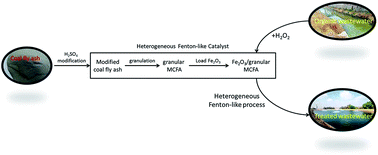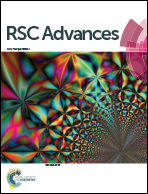Study on preparation conditions of coal fly ash catalyst and catalytic mechanism in a heterogeneous Fenton-like process
Abstract
Coal fly ash (CFA) was transformed into three kinds of heterogeneous Fenton-like catalysts (MCFA powder, granular MCFA and Fe2O3/granular MCFA). The study results show that different types of CFA have different initial catalytic performances and acid modification can activate CFA better (64.3% of p-NP removal rate) than other methods (alkali (41.1%) and heat (44.9%) modification). Compared with kaoline, attapulgite can produce better granular MCFA (43.1% (attapulgite) versus 28.6% (kaoline)) by bonding MCFA powder together, and the optimal calcination temperature is 723 K. Supporting Fe2O3 on the surface of granular MCFA can promote the performance of granular MCFA significantly. The precursor solution (Fe(NO3)3) with pH pre-adjusted by oxalate can produce a relatively good Fe2O3/granular MCFA catalyst and 12 h of impregnation is recommended. Calcining the impregnated granular MCFA at 673 K for 2 h is the last necessary step in preparing Fe2O3/granular MCFA. The three MCFA catalysts could be reused at least 3 times, with a 57% removal rate of COD, even if real secondary effluent was treated. The CFA and three MCFA catalysts were characterized and their catalytic mechanism in a heterogeneous Fenton-like process was proposed.



 Please wait while we load your content...
Please wait while we load your content...